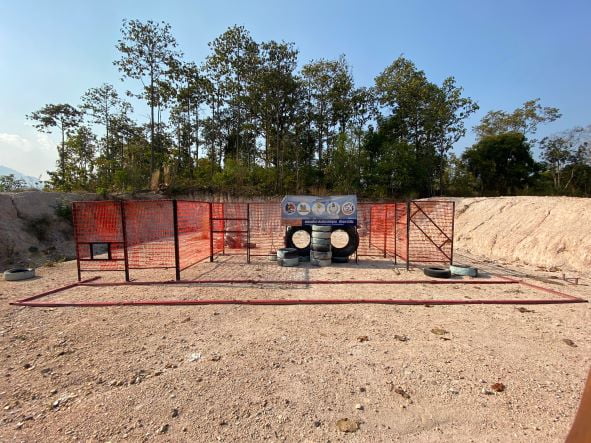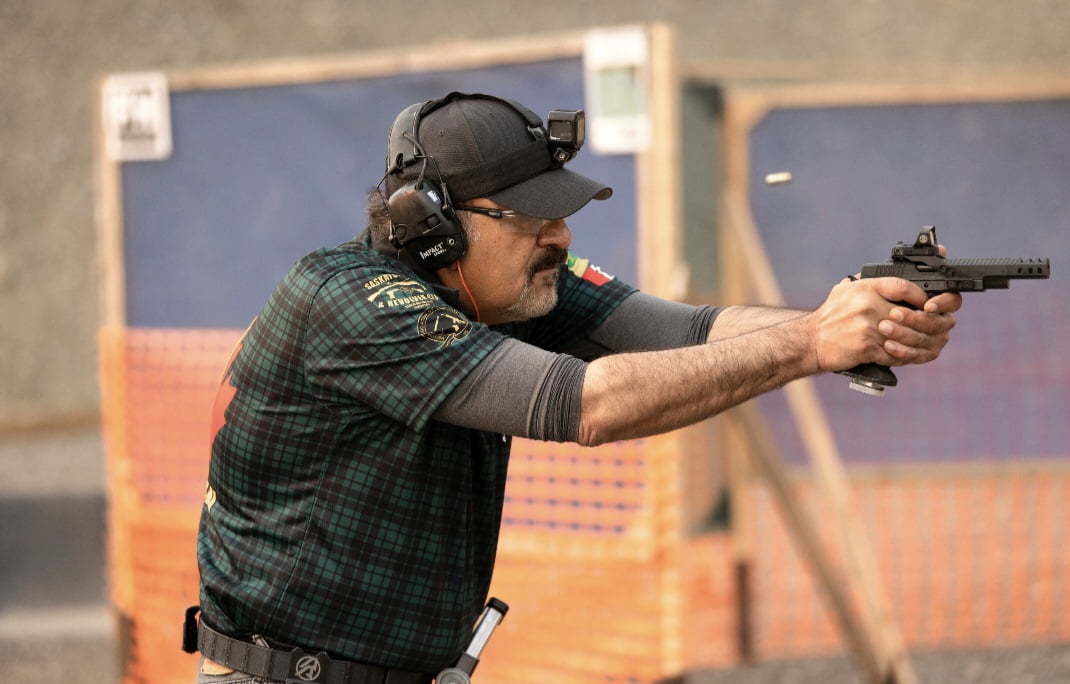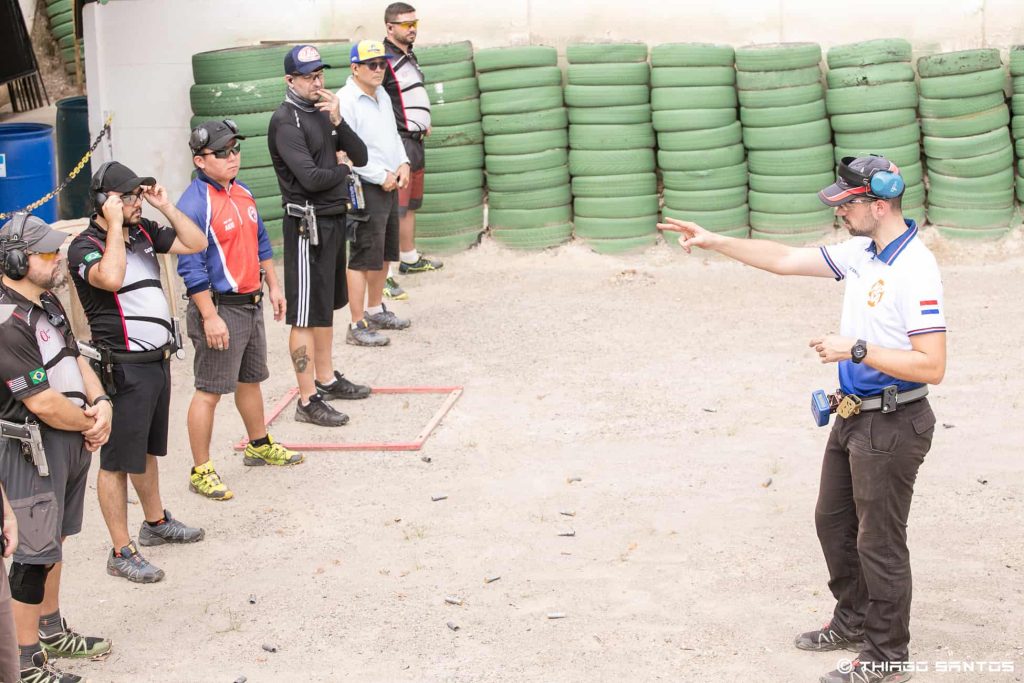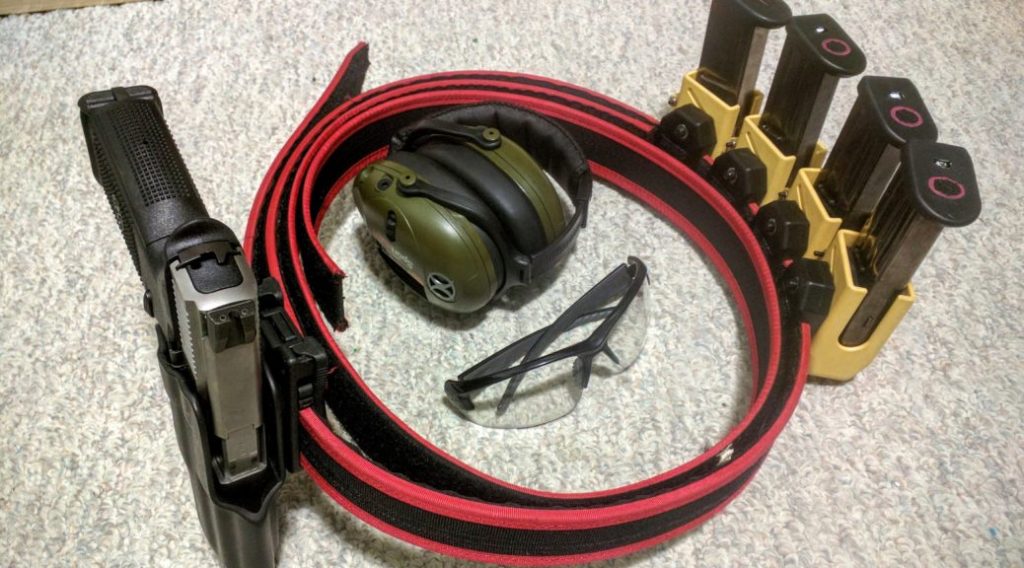IPSC (International Practical Shooting Confederation) is a shooting sport that originated in the United States in the 1950s and has since grown into an international competition. In IPSC shooting, competitors use handguns, rifles, and shotguns to navigate through a series of courses of fire, which are designed to test the competitor’s accuracy, speed, and overall shooting skills.
The courses of fire, also known as “stages,” are typically set up with a variety of targets, which can include steel plates, cardboard silhouettes, and other types of reactive targets. Competitors must shoot each target in the correct sequence, while also avoiding “no-shoot” targets that are placed near the actual targets to simulate real-world scenarios.
IPSC shooting emphasizes speed and accuracy, and competitors are judged on the time it takes to complete each stage as well as the accuracy of their shots. The sport is popular among both professional and amateur shooters and is recognized as an Olympic sport.
 |  |
What makes IPSC Unique?
There are several factors that make IPSC shooting a unique and challenging shooting sport:
- Dynamic Courses of Fire: IPSC stages are designed to simulate real-world shooting scenarios, which can include moving targets, barricades, and other obstacles. This makes IPSC shooting more dynamic and unpredictable compared to other shooting sports that have fixed and static ranges.
- Speed and Accuracy: In IPSC shooting, competitors must balance speed and accuracy. This means they need to shoot as fast as possible while still hitting all the targets accurately. This requires a high level of skill and practice.
- Gear and Equipment: IPSC shooting allows for a wide range of gear and equipment, which can include customized firearms, holsters, belts, and other accessories. This allows competitors to tailor their equipment to their individual needs and preferences.
- Scoring System: IPSC uses a unique scoring system that takes into account the time it takes to complete the stage as well as the accuracy of the shots. This means that a competitor who shoots accurately but slowly may still score higher than a competitor who shoots fast but inaccurately.
Overall, IPSC shooting is a challenging and exciting shooting sport that requires a combination of speed, accuracy, and strategic thinking. It is unique in its emphasis on dynamic stages, speed and accuracy, customizable gear and equipment, and a unique scoring system.
What are IPSC Regions?
IPSC (International Practical Shooting Confederation) is a global organization with several regions around the world. These regions are:
- Africa Region: This region includes IPSC members from all over Africa.
- Asia Region: This region includes IPSC members from countries in Asia, such as China, Japan, and Thailand.
- Australasia Region: This region includes IPSC members from Australia, New Zealand, and the surrounding islands.
- European Region: This region includes IPSC members from countries in Europe, such as Germany, France, and the United Kingdom.
- Latin American Region: This region includes IPSC members from countries in Central and South America, such as Brazil, Mexico, and Argentina.
- North American Region: This region includes IPSC members from countries in North America, such as the United States and Canada.

Each IPSC region has its own regional director, who is responsible for organizing and coordinating IPSC activities in their region. These activities can include local matches, regional championships, and other events that are sanctioned by IPSC. Each region also has its own set of rules and regulations that must be followed by IPSC members within that region.
What kind of people compete in IPSC?
IPSC (International Practical Shooting Confederation) matches are open to anyone who has an interest in the sport and meets the safety requirements. The sport attracts a diverse group of people who share a passion for shooting and competition.
Competitors in IPSC matches can range from casual hobbyists to professional shooters. Some competitors may have prior military or law enforcement experience, while others may have no formal training but have developed their skills through practice and participation in local matches.
IPSC shooting is a sport that appeals to people of all ages and backgrounds. There are juniors, seniors, and masters categories, which allow competitors to compete against others in their age group.
 |  |  |
IPSC shooting also attracts both men and women, and the sport has seen a significant increase in female participation in recent years. Women have shown that they can compete at the highest levels in the sport, and many have become world champions.
In summary, IPSC shooting is a sport that welcomes anyone who is interested in shooting and competition, regardless of their age, gender, or background.
Can beginners participate in IPSC?
Yes, there is a place for beginners in IPSC (International Practical Shooting Confederation). IPSC has designed its shooting matches to be challenging for experienced shooters but also accessible to beginners.
Many local clubs and organizations offer training courses and classes for new shooters, which can provide the necessary skills and knowledge to safely participate in IPSC matches. Additionally, there are specific divisions and categories for beginners, including “Production” and “Production Optics” divisions, which have specific equipment requirements that are less expensive and more accessible than other divisions.

IPSC also has a program called “D-Class” that is designed specifically for beginners. This program allows new shooters to compete with other beginners, with less challenging stages and simpler requirements for equipment and skill level.
Furthermore, IPSC matches have a supportive community, where experienced shooters are often willing to share their knowledge and provide guidance to newcomers. Many local clubs also organize “new shooter” matches or training sessions, where beginners can gain experience and improve their skills in a friendly and low-pressure environment.
Overall, IPSC is a welcoming sport for beginners, and with the right training and equipment, newcomers can compete in the sport and enjoy its challenges and rewards.
How expensive is IPSC shooting?
IPSC (International Practical Shooting Confederation) shooting can be an expensive sport, depending on the level of competition and equipment requirements. However, it is possible to participate in IPSC matches at a lower cost by selecting appropriate equipment and taking advantage of local resources.
Here are some factors that can contribute to the cost of IPSC shooting:
- Firearms: The cost of firearms can vary depending on the division and category in which a competitor chooses to compete. Higher-end firearms, such as custom competition pistols, can cost several thousand dollars, while entry-level pistols can be less expensive.
- Ammunition: IPSC matches require a significant amount of ammunition, and the cost of ammunition can add up quickly. The type of ammunition required depends on the division and category, and shooters may need to purchase special loads that are optimized for accuracy and speed.
- Equipment: Shooters may need to purchase equipment such as holsters, magazine pouches, and belts, which can add to the overall cost of the sport.
- Travel: Travel costs can be a significant expense for competitors who participate in matches outside of their local area or who travel to attend major matches.

However, there are ways to reduce the cost of IPSC shooting. For example, beginners can start with entry-level equipment and can take advantage of local resources such as training courses and practice sessions. Shooters can also reload their own ammunition, which can be more cost-effective than purchasing factory ammunition.
Overall, while IPSC shooting can be an expensive sport, there are ways to participate at a lower cost, and many shooters find the rewards of the sport to be worth the investment.